RIP Bishop Richard Williamson
The second of Archbishop Lefebvre's four bishops has died. Here's a brief overview of Bishop Williamson's impact.
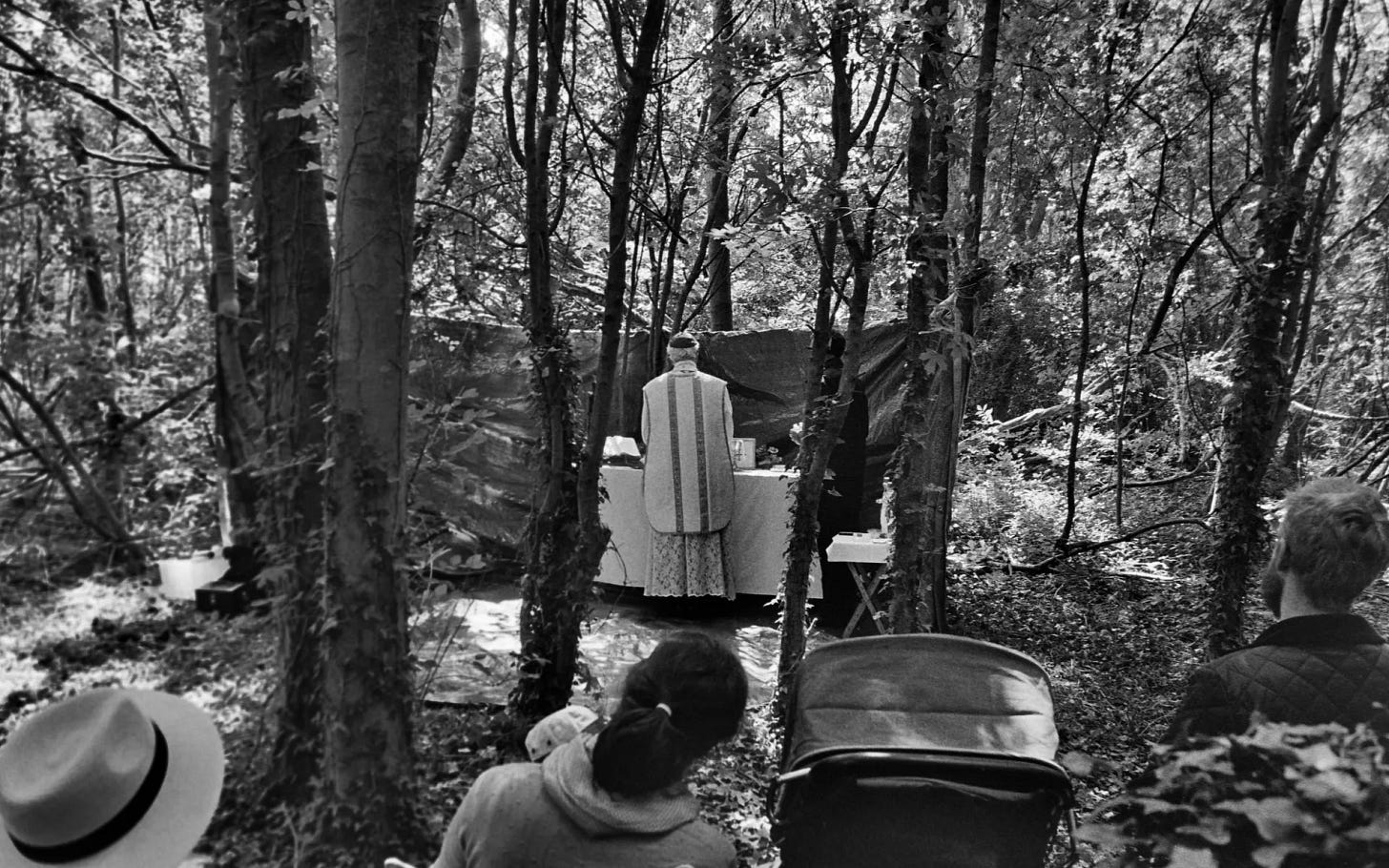
His Lordship Bishop Richard Williamson, formerly of the Society of St Pius X (SSPX) died on Wednesday, 29th January 2025 at 11.23pm GMT.
Si vous êtes français, lisez-le ici.
RIP Bishop Richard Williamson (Obituary)
+Viganò's Eulogy for +Williamson—and other responses
Farewell to a ‘turbulent priest’: Bishop Richard Williamson's funeral and burial
Five debts owed to Bishop Richard Williamson (Final Farewell)
Richard Nelson Williamson was born on 8 March 1940, in England. He was the second of three sons, born to English and American parents (with some French cultural heritage thrown in for good measure).
He received a scholarship to study at Winchester College, a prestigious public school, and later progressed to the University of Cambridge, and thereafter became a teacher at St Paul’s School for Boys, London.
Dr David Allen White—who is himself currently very sick—provides many details of his early life in his biography The Voice of the Trumpet.
Williamson was born into Anglicanism, although he grew dissatisfied with it and became an atheist. In due course, his interest in history and social matters drove him to consider whether the problems of modernity might not have arisen from the Industrial Revolution as he had thought, but from the Protestant Reformation.
After reading, reflection, and a series events and encounters, Williamson was received into the Catholic Church in 1971 by one Fr John Flanagan, a priest of the diocese of Arundel and Brighton.
Flanagan soon encouraged the new convert to try a vocation to the priesthood. In 1972, Williamson attended a vocations weekend run by the diocese of Arundel and Brighton. The panel seemed to have found him too retrograde in his religion, and did not accept him for the next stage.1
Flanagan and another priest then suggested that he try a vocation at London’s Brompton Oratory. Although he managed to progress to postulancy, this also did not go well for the same sorts of reasons, and he was let go again.2
When he told Flanagan what had happened, the priest replied:
“Well, young man, if you can’t keep your big mouth shut, there’s only one place for you and that’s Écône.”3
After making the thirty day Spiritual Exercises of St Ignatius, Williamson entered the Society of St Pius X seminary of Écône, Switzerland, under Archbishop Marcel Lefebvre.
He was ordained a priest by the Archbishop in 1976.
The Society of St Pius X
As a priest, he served as rector of the St Thomas Aquinas Seminary in Ridgefield, Connecticut and Winona, Minnesota.
In June 1988, Lefebvre (along with Bishop Antônio de Castro Mayer, the retired diocesan bishop of Campos, Brazil) consecrated Fr Richard Williamson as a bishop, along with Frs Bernard Fellay, Bernard Tissier de Mallerais and Alfonso de Galarreta.
The consecrations, performed without papal mandate, were intended to preserve the traditional Catholic priesthood and sacraments.
John Paul II stated that these six men had all incurred an automatic excommunication, a claim which they rejected.
‘Excommunication years’
In 1991, soon after the episcopal consecration, both Lefebvre and de Castro Mayer died.
Bishop de Castro Mayer had resigned from his diocesan see of Campos, Brazil, in 1981, but had continued to lead an opposition to the Vatican II reforms in the diocese. Many priests of this diocese rallied around de Castro Mayer, and eventually formed themselves into the Priestly Union of St John-Mary Vianney (or the SSJV).
Following de Castro Mayer's death, the SSPX quickly and without scruple provided a new bishop for the priests of Campos in the person of Fr Licínio Rangel. Bishop Tissier de Mallerais was the principal consecrator at this episcopal consecration, with Bishops Williamson and de Galarreta as the co-consecrators.
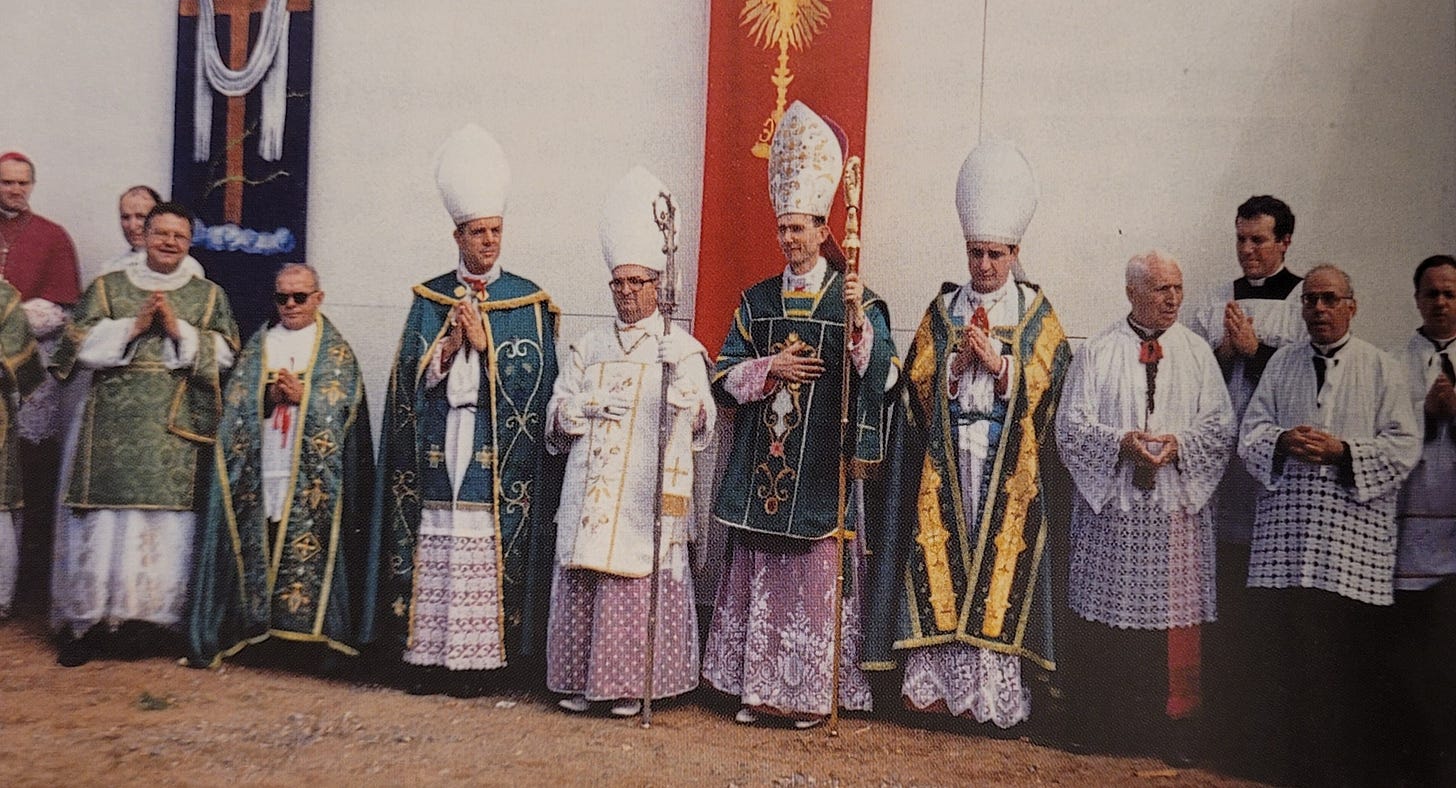
Tensions grow
In 2009, after two decades, Benedict XVI claimed to lift the alleged “excommunications” of the four bishops, with a view to reconciliation between the SSPX and the Vatican.
Around the same time, Williamson gave an interview on Swedish television, in which he espoused ideas that are illegal in some countries. This led to great tension and controversy within the SSPX, and with the Vatican. Benedict XVI stated that, had he known Williamson held ideas about a certain matter of history, he would have dealt with his alleged excommunication differently.
Regardless of what one thinks of the ideas in question, it should be remarkable to any sane person that the Conciliar/Synodal Church is prepared to judge someone for their views on historical matters, whilst tolerating and even promoting those who spread doctrinal and moral errors. This tells us everything that we need to know about the Conciliar/Synodal Church’s legitimacy.
His Lordship suffered the indignity of being the subject of a chapter in Benedict XVI’s 2009 book-length interview with Peter Seewald, Light of the World. In this interview, Ratzinger disgracefully said the following of Williamson:
“… he was, when you think about [it], never Catholic in the proper sense. He was an Anglican and then went over directly to Lefebvre. This means that he has never lived in the great Church, that he has never lived with the Pope.”4
Aside from anything else, these comments are factually incorrect on Ratzinger's own premises. Williamson was received into the Church by a priest in good standing with the putative hierarchy. As mentioned, he began his initial pursuit of a vocation with the Diocese of Arundel and Brighton, and tried a vocation with the Oratory before entering Ecône. So much for that.
In any case, for Ratzinger—an arch-modernist, partisan of Vatican II, and usurper of the Holy See—to accuse someone else of not being a Catholic is an example of extreme gaslighting. However, such an accusation should be seen a badge of honour for Williamson, coming as it did from a man who could make such claims as this:
Let us be content to say here that the text [Vatican II’s Gaudium et Spes] serves as a counter-syllabus [viz. to Pius IX’s Syllabus of Errors] and, as such, represents, on the part of the Church, an attempt at an official reconciliation with the new era inaugurated in 1789.5
His Lordship was himself a strong critic of Ratzinger and his modernist agenda, endorsing Bishop Tissier de Mallerais’ study Faith Imperilled by Reason long after the author had abandoned his work to the memory-hole.
In spite of all this, Williamson did not “return the favour” and accuse Ratzinger of being a non-Catholic himself. Instead, he proposed an explanation for his modernism, later waggishly dubbed “mentevacantism,” which held that the conciliar claimants to the papacy have had sick minds, which prevent them from adhering to heresy, and thus allow them to retain the papacy.
In passing, we are obliged to note that this is actually an argument against the legitimacy of the post-conciliar claimants to the papacy, as Bishop Donald Sanborn explains. Aside from there being other arguments for the illegitimacy of these claimants to the papacy, it is hard to see how someone who is mentally incapable of rejecting the faith can be mentally capable of accepting or professing the faith.
Resistance Years and consecrations
Around the time of the “lifting” of the “excommunications,” practical and doctrinal disagreements within the Society of St Pius X became more and more impossible to ignore. These disagreements with the then-leadership were based primarily around whether or not the organisation should make a practical canonical agreement with Ratzinger and his Vatican, prior to the resolution of the doctrinal questions of Vatican II.
As a result of these disagreements with the leadership, and other factors which cannot be discussed here, Williamson was expelled from the SSPX in 2012. In spite of this, and his continuing criticism of the SSPX, he maintained good relations with a surprising number of his former colleagues.
There is far too much to say about his Lordship’s post-expulsion period for this short piece. Needless to say, he acquitted himself very well in the years 2020–2. Qui legit, intelligat.
One remarkable feature of this period, particularly over the last few years, is the extent to which he came to inspire a younger generation of men, inside and outside the Church. Their “adoption” of the bishop was no doubt fuelled by the increased availability of high quality recordings of his sermons and conferences online, as well as his readiness to speak boldly and clearly on contemporary issues in such recordings.
While his Lordship evidently loved to talk at length when called to do so, he also listened to these younger men, and did not patronise them. It seems that they found in him a churchman who understood and showed that he understood the difficulties of the social, political, economic and spiritual situation in which they and their families found themselves today. He was especially aware of the difficulties faced by wives in the modern world, and the corresponding duties that these difficulties placed on their husbands.
The bishop conveyed both idealism and realism to these young men, along with interest and respect for them, and the laity in general. In his turn, he helped them to understand their own situation better in light of God's will and the Catholic faith.
This adoption included many invitations to appear on Catholic and non-Catholic podcasts and so on. With each interview and podcast, it was clear that his Lordship was there trying specifically to seek out souls to win for his Lord. One way they manifested their appreciation and affection was in a particular genre of TikTok videos, which took striking clips of the Bishop’s sermons, conferences and interviews and remixed them with electronic music, old photographs and other special effects.
While some may have been initially attracted to Bishop Williamson for his political and historical ideas, they also found in him a passionate advocate for the rights of God, the Rosary—particularly the daily fifteen-decade Rosary—St Ignatius’ Spiritual Exercises, the First Saturday devotions, and so on.
We will see the good this has achieved in due course, and on the last day.
Consecration of Bishops
During these years, Bishop Williamson consecrated a number of other bishops:
Jean-Michel Faure (2015)
Gerardo Zendejas (2017).
Since then, it has also emerged that Williamson privately consecrated:
Giacomo Ballini (2021)
Michał Stobnicki (2022)
Paul Morgan, former district superior of SSPX GB (2022).
It is also rumoured that Bishop Williamson conditionally consecrated Archbishop Carlo Maria Viganò to the episcopate; however, this has not been confirmed. About 20 minutes after Williamson’s death was announced, Viganò posted the following photograph on Twitter without comment:
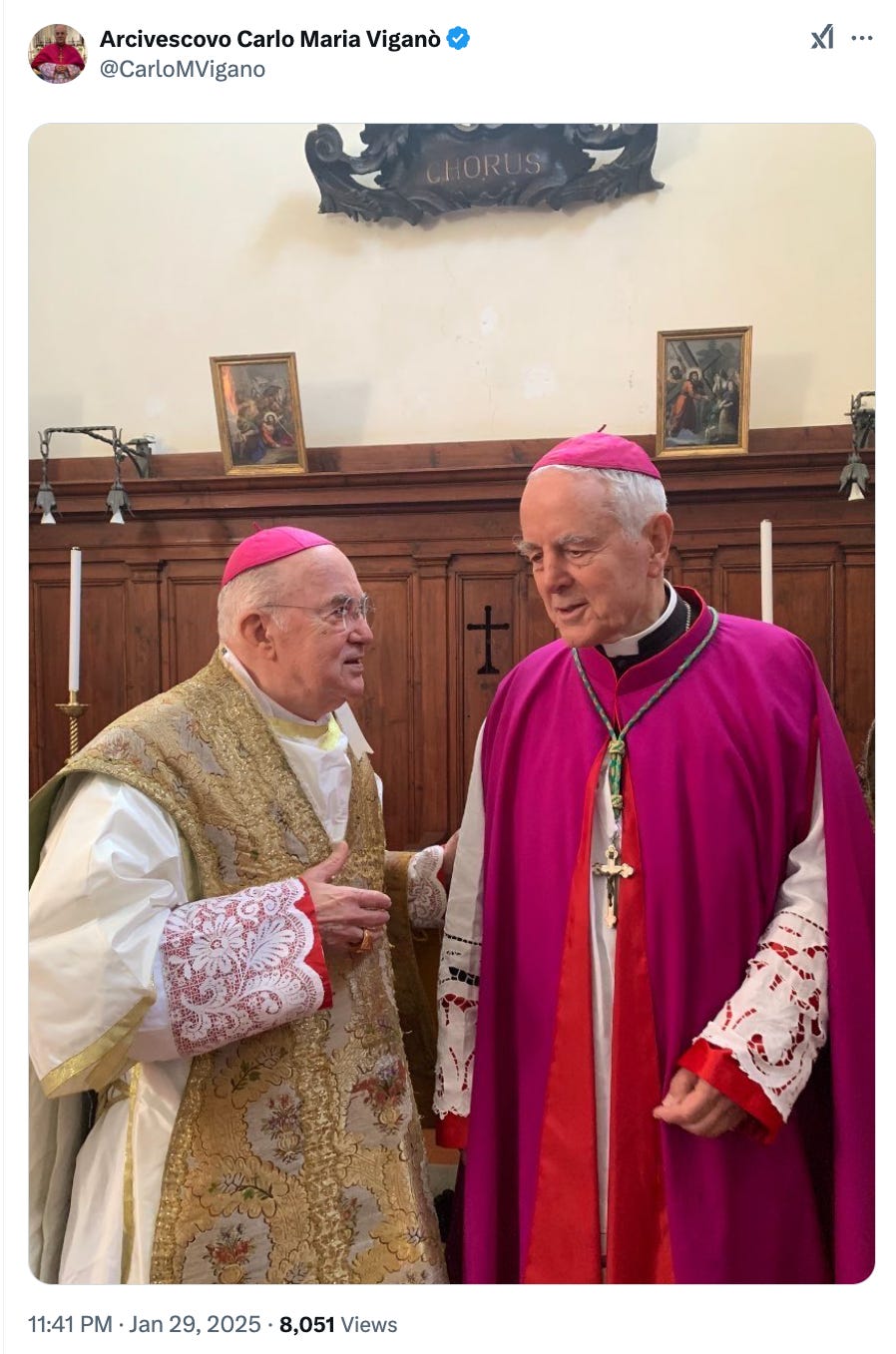
Leaving Viganò aside, Bishop Williamson’s other consecrations were not received well by all. Some denounced the early consecrations, and stated that they were not at all comparable to Lefebvre’s consecrations in 1988. But leaving that comparison aside, this fails to compare these consecrations with that of Bishop Licínio Rangel in 1991—a comparison which would have been considerably more instructive.
The privacy or secrecy of the latter consecrations, announced after the events, may be understandable given the political climate of the early 2020s, but it seems inevitable that, following his death, charlatans will appear, falsely claiming to have been consecrated by him.
For similar reasons, some who truly were secretly consecrated, conditionally consecrated, or ordained by him may be met with a level of scepticism.
However, given that the bishop did not live or work alone, providing evidence or testimony of the facts should be straightforward if required.
Questions of sacramental validity
Bishop Williamson’s consecrations bring us to another important aspect of the bishop’s legacy.
Williamson understood the importance of securing sacramental validity and moral certainty on this topic. He was generous in the provision of conditional sacraments for the wellbeing of the faithful in doubt.
He was complimentary toward my co-editor’s article on baptisms in the Novus Ordo milieu and approved of its general approach.
Both before and after his expulsion, he conditionally confirmed many Catholics who had been confirmed in the Novus Ordo rite, or by Novus Ordo bishops.
While he seemed to believe that there were valid priests in the Novus Ordo milieu, Williamson conditionally ordained priests whose putative orders were derived from the Novus Ordo rites.
On the latter subject of orders, he praised the study of Fr Alvaro Calderón SSPX on the doubtfulness of the new episcopal rite of consecration—the final paragraph of which reads:
But the positive and objective defects that this rite suffers, which prevent certainty of its validity, seem to us – until there is a Roman judgment, for which many things would have to change – to justify and make necessary the conditional reordination of priests consecrated by new bishops and, if necessary, the conditional reconsecration of these bishops. Such uncertainties cannot be tolerated at the very root of the sacraments.6
As with his praise of Tissier de Mallerais’ study of Ratzinger’s modernist theology, Williamson's endorsement of Calderón’s work continued even after the author had abandoned his work to the memory-hole. Williamson also had great praise for Calderón’s book on Vatican II, titled Prometheus—The Religion of Man.
In his approach to sacramental validity, Bishop Williamson remained faithful to the pastoral practice and the mature opinions of Archbishop Marcel Lefebvre.
In 1988, Lefebvre wrote the following letter to a “Mr Wilson”, evidently answering another letter about conditional ordinations for priests ordained in the new rites:
… I agree with your desire to reordain conditionnaly these priests, and I have done this reordination many times. All sacraments from the modernists bishops or priests are doubtfull now.
The changes are increasing and their intentions are no more catholics.
We are in the time of great apostasy.
We need more and more bishops and priests very catholics. It is necessary everywhere in the world.7 (Typos in original.)
Although he has gone from among us, Bishop Williamson’s legacy lives on in the sacramental characters imposed on the souls whom he baptised, confirmed and ordained, and in the peace of conscience that he provided through his conditional repetition of these sacraments.
Death
On Friday, 24 January 2024, Bishop Williamson suffered a brain haemorrhage, and was hospitalised.
He received extreme unction, and his Telegram channel ‘Truth Unchained’ provided regular updates and requests for prayer.
During this period, unknown parties spread rumours that he was already dead, which seemed to convince many.
In spite of this, many well-wishers from the clergy and faithful gathered in prayer around his bedside in the QEQM Hospital in Margate, England.
Unusually for a UK hospital, there was a statue of Our Lady near the bishop’s hospital room.
However, having been unconscious for several days, he died at 11.23pm on Wednesday, 29 January 2024—the feast of St Francis de Sales. Following a final agony which “was only a matter of minutes,” he went to his judgement and reward.
What will happen next?
This momentous event raises questions both for the SSPX and for the Resistance.
Bishop Williamson closely follows Bishop Tissier de Mallerais, who died a few months earlier on 8 October 2024.
Bishops Fellay and de Galarreta are the only two of the 1988 bishops left. Will the passing of Tissier de Mallerais and Williamson remind them of their mortality, and spur SSPX on to consecrate further bishops? Some seem to think that this would be a new step for the Society, as if they had not already taken this step with Bishop Rangel.
It remains to be seen whether the SSPX will follow Bishop Williamson in consecrating further bishops, and thus repeat their own acts of 1988 and 1991, or follow some other path.
As for the Resistance, we shall see what we shall see. Following his expulsion, Williamson eschewed organised structures, saying:
“God [...] wants a loose network of independent pockets of Resistance, gathered around the Mass, freely contacting one another, but with no structure of false obedience such as served to sink the mainstream Church in the 1960s, and is now sinking the Society of St Pius X.”
Whatever else could be said about this vision, it shows that Bishop Williamson correctly understood the status of the traditionalist clergy in our day, and was unwilling to act towards other clergy or the laity as if it were otherwise.
As a result, this “loose network” has not depended on Williamson as a charismatic leader, as other groups might have done on their leaders. While his passing will be a great loss for the Resistance, its effects may well differ now from what they would have been otherwise.
However, not everyone in the Resistance agrees with this vision; some would have preferred more organisation and structure. Which direction (or directions) will this “loose network” take following Williamson’s passing?
Always a controversial figure, many will have had serious disagreements with at least one aspect, or perhaps more, of the late Bishop’s theology. I know I did.
Nonetheless, Catholics may be grateful to Bishop Williamson for many things. I know I am.
He will be missed.
May His Lordship rest in peace.
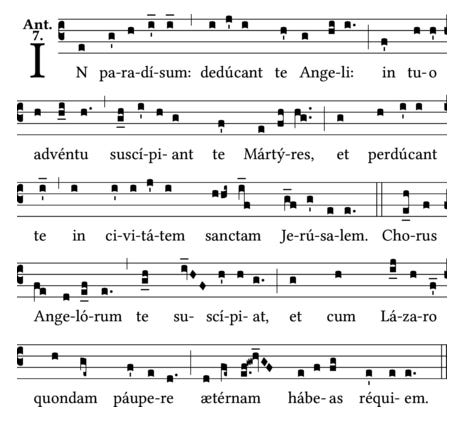
Further reading:
Obituary for Bishop Williamson—Stephen Kokx
The Voice of the Trumpet—David Allen White (Biography of Bishop Williamson)
Sermons and Conferences of Bishop Williamson (YouTube)
TruthUnchained (Telegram)
Against Mentevacantism—Bishop Donald Sanborn
Follow on Twitter, YouTube and Telegram:
HELP KEEP THE WM REVIEW ONLINE!
As we expand The WM Review we would like to keep providing free articles for everyone.
Our work takes a lot of time and effort to produce. If you have benefitted from it please do consider supporting us financially.
A subscription from you helps ensure that we can keep writing and sharing free material for all. Plus, you will get access to our exclusive members-only material.
(We make our members-only material freely available to clergy, priests and seminarians upon request. Please subscribe and reply to the email if this applies to you.)
Subscribe now to make sure you always receive our material. Thank you!
David Allen White describes the interview:
The probing then turned to questions of “peace and justice. ” When asked to offer his comments on the subject, the young man responded with the fearful prospect of souls being assigned to hell by God’s justice and the need for so many modern men to do penance, prayer intentions laid out by the Blessed Mother through many of her recent apparitions.
End of interview.
David Allen White, p 113
White writes:
During this postulancy, a sweet old priest taught scripture to the young men, but taught exclusively out of a “new” Bible Commentary. The imprudent troublemaker piped up at one session and asked an outrageous question: “Father, why don’t we read St. Augustine?” The old priest froze, looked over the top of his glasses and fixed his icy stare on the obstreperous troglodyte, seeking to leave him “pinned and wriggling on the wall.”
Ibid., 114
Ibid.
Light of the World, pp 121-2
Joseph Ratzinger, Principles of Catholic Theology, pp 381-2, 391. Ignatius Press, San Francisco CA, 1989.



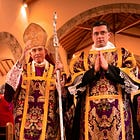

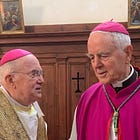
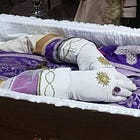
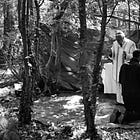
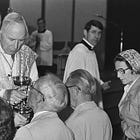
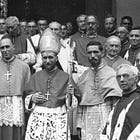
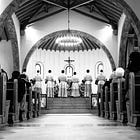
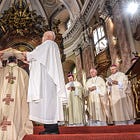
I'm indebted to the great Bishop Williamson for his clarity of speech that whether or not you agreed completely with him one was left in no doubt as to his views. Even among the traditionalist clergy it's hard to find pure straight talking without at least some bowing to PC culture. Bishop Williamson taught us how to say what we mean and mean what we say even at the cost of isolation. At least there can then be real understanding, discussion and even resolution to the still present ontroversial topics.
R.I.P. The Church needs more clear speaking shepherds like Bishop Williamson who serve our Lord more than human respect.